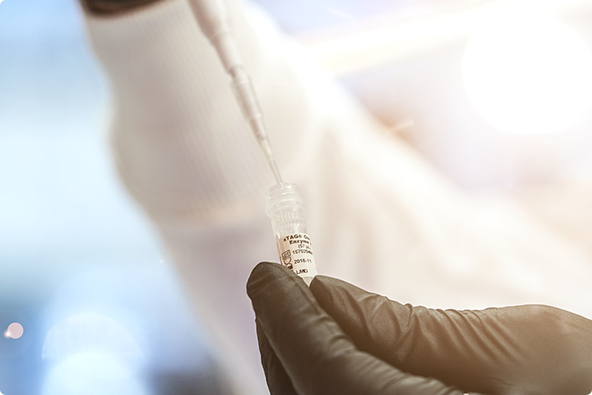Top 10 tips for a successful coupling process

If you’re designing a new multiplex bead-based assay or adding new targets to an existing xMAP® Technology-based assay, the coupling process required to add a protein or an antibody can seem daunting. We’re here to help!
While the Luminex custom assay development service can help you with coupling, we believe that anyone who knows their way around the lab can perform successful coupling reactions. It is very straightforward, and carefully following the xMAP Cookbook recipes can make all the difference.
If you’ve never performed coupling before, or if you’ve done it in the past and noticed problems, there are a few common issues that can be easily worked through.
Variability is the number one issue to avoid. Let’s say you’re performing a coupling confirmation assay to verify coupling efficiency. If there’s a really low signal, this could indicate an issue with the coupling process. As a general guideline, we recommend 5 micrograms per million beads, but always encourage users to do a titration to check the optimal concentration to put on the bead.
Low signal can also be a sign that there is a reagent quality issue. If you’re using 1-ethyl-3-(3-dimethylaminopropyl)carbodiimide hydrochloride (EDC) that has degraded, you may experience poor coupling efficiency. This is a common problem. Take care of those EDC vials! Be sure to store EDC in the freezer with a desiccant.
Over-vortexing can also cause problems. We recommend that xMAP users vortex and sonicate to make sure the beads are in homogenous suspension, but over-vortexing can lead to clumping, which will affect coupling.
To help you streamline the bead coupling process, here are our top 10 tips for reducing variability:
- Microspheres are light-sensitive. There’s no need to couple in the dark, but cover tubes in foil during incubation steps. If exposed to light for too long, the beads will photobleach.
- When resuspending the uncoupled beads in the coupling tube, make sure you have vortexed and sonicated the beads. Bead loss is often due to not mixing the beads well.
- There is such a thing as too much vortexing and sonicating. Stick to the recommended recipe to avoid bead clumping.
- Make sure you are using the tubes specified in the xMAP Cookbook, as tube type can have an impact on coupling efficiency. We recommend:
- USA Scientific® (Catalog # 1415-2500), or
- Eppendorf™ Protein LoBind (Catalog # 022431081)
- Make sure you have an appropriate magnet for the tube type containing your beads. The right kind will pull the beads to one side, not split them between both sides, or leave beads floating in the tube.
- Magnets can lose magnetism if not taken care of properly (e.g., do not store magnets on top of each other).
- Embrace single-use 10 mg EDC vials. Bulk EDC is hygroscopic, so it readily absorbs moisture from the air. Over time, the EDC degrades, which greatly diminishes coupling efficiency.
- When performing wash steps, make sure you place the beads on the magnet for at least 30 to 60 seconds for typical couplings. For large-scale coupling, visually check to ensure beads have been pulled. If they haven’t, wait an additional 30 to 60 seconds.
- When washing and aspirating beads, be careful not to disturb the beads to avoid having them stick to the transfer pipette.
- If using automation, check bead recovery before and after coupling. Ensure automation is optimally set up to avoid significant bead loss.
Please feel free to reach out with any questions. We’re confident that you can master the science of bead coupling!
